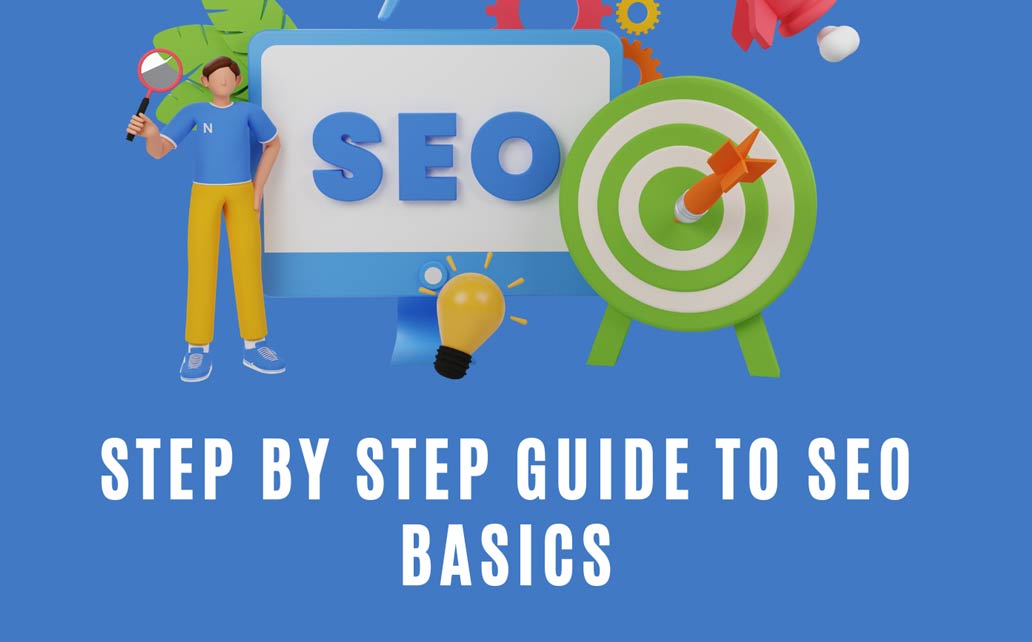
-
Table of Contents
Master the art of SEO with this comprehensive step-by-step guide for beginners.
Introduction:
SEO, or Search Engine Optimization, is a crucial aspect of digital marketing that aims to improve a website’s visibility and organic traffic on search engine results pages. For beginners, understanding the fundamentals of SEO can be overwhelming. This step-by-step guide is designed to provide a comprehensive introduction to SEO, covering essential concepts, techniques, and best practices. Whether you are a business owner, marketer, or website owner, this guide will equip you with the knowledge and tools needed to optimize your website and drive more organic traffic.
Understanding the Basics of SEO: A Beginner’s Guide
Search Engine Optimization (SEO) is a crucial aspect of digital marketing that helps websites rank higher in search engine results pages (SERPs). For beginners, understanding the basics of SEO can be overwhelming. However, with a step-by-step guide, anyone can grasp the fundamentals and start optimizing their website for better visibility and increased organic traffic.
To begin with, it is essential to understand what SEO is and why it matters. SEO refers to the process of optimizing a website to improve its visibility on search engines like Google. When a user searches for a specific keyword or phrase, search engines display a list of relevant websites. The higher a website ranks on the SERPs, the more likely it is to receive organic traffic.
The first step in SEO is keyword research. Keywords are the words or phrases that users type into search engines when looking for information. By identifying the right keywords for your website, you can optimize your content to match what users are searching for. There are various tools available, such as Google Keyword Planner, that can help you find relevant keywords with high search volumes and low competition.
Once you have identified your target keywords, the next step is on-page optimization. This involves optimizing various elements on your website, such as meta tags, headings, and content, to make it more search engine-friendly. Start by optimizing your meta tags, including the title tag and meta description, which provide a brief summary of your webpage’s content. Make sure to include your target keywords naturally in these tags.
Additionally, optimize your headings by using H1, H2, and H3 tags to structure your content. These tags help search engines understand the hierarchy and relevance of your content. Incorporate your target keywords into your headings to further optimize your website.
Content optimization is another crucial aspect of on-page SEO. Create high-quality, informative, and engaging content that is relevant to your target audience. Use your target keywords strategically throughout your content, but avoid keyword stuffing, as it can negatively impact your rankings. Instead, focus on providing value to your readers and answering their queries.
Apart from on-page optimization, off-page optimization is equally important. Off-page optimization refers to activities that take place outside of your website but still impact your search engine rankings. The most significant off-page factor is backlinks. Backlinks are links from other websites that point to your website. They act as a vote of confidence, indicating to search engines that your website is trustworthy and authoritative.
Building high-quality backlinks is crucial for improving your website’s visibility. You can acquire backlinks through various methods, such as guest blogging, influencer outreach, and content promotion. However, it is essential to focus on quality rather than quantity. A few high-quality backlinks from authoritative websites can have a more significant impact than numerous low-quality backlinks.
In addition to on-page and off-page optimization, technical SEO plays a vital role in improving your website’s visibility. Technical SEO involves optimizing the technical aspects of your website, such as site speed, mobile-friendliness, and crawlability. A fast-loading website that is mobile-friendly and easily accessible by search engine bots will have a higher chance of ranking well.
Regularly monitoring and analyzing your SEO efforts is crucial to ensure continuous improvement. Use tools like Google Analytics and Google Search Console to track your website’s performance, identify areas for improvement, and measure the success of your SEO strategies. By analyzing data and making data-driven decisions, you can refine your SEO tactics and achieve better results over time.
In conclusion, SEO is a complex but essential aspect of digital marketing. By understanding the basics and following a step-by-step guide, beginners can optimize their websites for better visibility and increased organic traffic. From keyword research to on-page and off-page optimization, as well as technical SEO and continuous monitoring, implementing effective SEO strategies can help your website rank higher in search engine results and attract more targeted visitors.
Step-by-Step SEO Techniques for Beginners
Search Engine Optimization (SEO) is a crucial aspect of digital marketing that helps websites rank higher in search engine results pages (SERPs). For beginners, understanding the basics of SEO can be overwhelming. However, by following a step-by-step guide, beginners can learn and implement effective SEO techniques to improve their website’s visibility and drive organic traffic.
The first step in SEO is keyword research. Keywords are the words or phrases that users type into search engines when looking for information. By identifying relevant keywords for your website, you can optimize your content to match user intent. There are various tools available, such as Google Keyword Planner and SEMrush, that can help you find keywords with high search volume and low competition.
Once you have identified your target keywords, the next step is on-page optimization. This involves optimizing your website’s content, meta tags, and URLs to make it more search engine-friendly. Start by incorporating your target keywords naturally into your content, ensuring that it reads well for users. Additionally, optimize your meta tags, including the title tag and meta description, to accurately describe your page’s content and entice users to click.
Another crucial aspect of on-page optimization is optimizing your website’s structure and navigation. Ensure that your website has a clear and logical structure, with each page accessible within a few clicks from the homepage. Use descriptive and keyword-rich URLs that accurately reflect the content of each page. This helps search engines understand your website’s structure and improves user experience.
The next step in SEO is off-page optimization, which involves building high-quality backlinks to your website. Backlinks are links from other websites that point to your site. Search engines consider backlinks as votes of confidence, indicating that your website is trustworthy and authoritative. To build backlinks, reach out to relevant websites in your industry and request them to link to your content. Additionally, create valuable and shareable content that naturally attracts backlinks from other websites.
In addition to backlinks, social signals also play a role in SEO. Social signals refer to the likes, shares, and comments your content receives on social media platforms. By creating engaging and shareable content, you can increase your website’s visibility and attract more organic traffic. Additionally, having an active presence on social media platforms can help you build brand awareness and establish credibility in your industry.
Monitoring and analyzing your website’s performance is essential to measure the effectiveness of your SEO efforts. Use tools like Google Analytics to track your website’s traffic, user behavior, and conversions. This data can help you identify areas for improvement and make informed decisions to optimize your website further.
Lastly, staying updated with the latest SEO trends and algorithm changes is crucial for long-term success. Search engines constantly update their algorithms to provide users with the most relevant and high-quality search results. By staying informed, you can adapt your SEO strategies accordingly and ensure that your website remains visible in search engine results.
In conclusion, SEO can seem daunting for beginners, but by following a step-by-step guide, you can effectively optimize your website and improve its visibility in search engine results. Start with keyword research, optimize your on-page elements, build high-quality backlinks, leverage social signals, monitor your website’s performance, and stay updated with the latest SEO trends. With time and consistent effort, you can achieve higher rankings, drive organic traffic, and grow your online presence.
Common SEO Mistakes to Avoid for Beginners
Common SEO Mistakes to Avoid for Beginners
When it comes to search engine optimization (SEO), beginners often find themselves overwhelmed by the sheer amount of information available. With so many strategies and techniques to consider, it’s easy to make mistakes that can hinder your website’s visibility and ranking on search engine results pages (SERPs). In this article, we will discuss some common SEO mistakes that beginners should avoid, providing a step-by-step guide to help you navigate the world of SEO successfully.
One of the most common mistakes beginners make is neglecting keyword research. Keywords are the foundation of SEO, as they are the terms and phrases that users enter into search engines when looking for information. Without proper keyword research, you risk targeting the wrong audience or missing out on valuable traffic. To avoid this mistake, start by brainstorming a list of relevant keywords and phrases that are related to your website’s content. Then, use keyword research tools to determine their search volume and competition level. This will help you identify the most effective keywords to target.
Another mistake beginners often make is keyword stuffing. Keyword stuffing refers to the practice of excessively using keywords in your content in an attempt to manipulate search engine rankings. However, search engines have become smarter and can now detect this tactic. Instead of improving your ranking, keyword stuffing can lead to penalties and a decrease in visibility. To avoid this mistake, focus on creating high-quality, informative content that naturally incorporates your keywords. Remember, the goal is to provide value to your audience, not to trick search engines.
In addition to keyword stuffing, neglecting on-page optimization is another common mistake beginners make. On-page optimization involves optimizing various elements on your website, such as title tags, meta descriptions, and header tags, to improve your website’s visibility on SERPs. By neglecting on-page optimization, you miss out on opportunities to rank higher and attract more organic traffic. To avoid this mistake, ensure that each page on your website has a unique and descriptive title tag, a compelling meta description, and properly formatted header tags. These elements not only help search engines understand your content but also entice users to click on your website in search results.
Furthermore, beginners often overlook the importance of building high-quality backlinks. Backlinks are links from other websites that point to your website. They are a crucial ranking factor for search engines, as they indicate the credibility and authority of your website. However, not all backlinks are created equal. Obtaining low-quality or spammy backlinks can harm your website’s reputation and ranking. To avoid this mistake, focus on building natural and relevant backlinks from reputable websites. This can be achieved through guest blogging, creating valuable content that others want to link to, and engaging with your industry’s online community.
Lastly, neglecting to track and analyze your SEO efforts is a mistake that beginners often make. Without tracking your progress, you won’t know if your SEO strategies are effective or if adjustments need to be made. To avoid this mistake, use analytics tools to monitor your website’s performance, such as organic traffic, keyword rankings, and conversion rates. This data will provide valuable insights into what is working and what needs improvement, allowing you to refine your SEO strategies and achieve better results.
In conclusion, as a beginner in the world of SEO, it’s important to be aware of common mistakes that can hinder your website’s visibility and ranking. By avoiding keyword research mistakes, keyword stuffing, neglecting on-page optimization, obtaining low-quality backlinks, and neglecting to track and analyze your efforts, you can set yourself up for success in the competitive world of SEO. Remember, SEO is an ongoing process, so continue to educate yourself, stay up-to-date with industry trends, and adapt your strategies accordingly.In conclusion, SEO for Beginners: A Step-by-Step Guide is a valuable resource for individuals who are new to search engine optimization. It provides a comprehensive overview of the key concepts and techniques involved in optimizing a website for better visibility and higher rankings on search engine results pages. The guide breaks down the process into manageable steps, making it easier for beginners to understand and implement SEO strategies. By following the step-by-step instructions and tips provided in the guide, beginners can gain a solid foundation in SEO and improve their website’s online presence.









